What Is Aftercare In The Juvenile Justice System
What is aftercare in the juvenile justice system. Historically these services have been focused on the juvenile and the development of rehabilitation plans to help young offenders become productive law-abiding members of society. A structure that is intended to represent or model something about the world. Aftercare in the juvenile justice system is the equivalent of parole in the adult criminal justice system.
The overall goal of reentry programs is. The juvenile justice system handles and rehabilitates children who are moving through the criminal justice system. Juvenile aftercare encompasses a series of reiterative services developed to prepare offending youths placed initially out of their homes for transition into the community.
Release from the juvenile justice system. What is the difference between secure confinement and nonsecure confinement. Due to conflicting circumstances of patient needs legal mandates moral and ethical concerns andor logistical issues traditional on.
Aftercare programs consist of transition programming to assist juveniles integrating back into their community. M Juvenile Justice and Welfare System refers to a system dealing with children at risk and children in conflict with the law which provides child-appropriate proceedings including programs and services for prevention diversion rehabilitation re-integration and aftercare to ensure their normal growth and. According to the latest estimates nearly 100000 young people leave juvenile justice facilities each year.
Indicate whether the statement is true or false Question 2 This term represents a set of concepts and the proposed relationships among these. Incorporating the Strengths Perspective into Intensive Juvenile Aftercare 50 to expand and incidence of associated problems remains troubling Cannon 2004. Gault and other cases have not given juveniles the right to bail to a jury trial or not to be searched if there is no probable cause to believe a juvenile has committed a crime.
Challenges of Juvenile Reentry As noted in the introduction offender reentry has become a serious public policy issue for the juvenile justice system in the United States. The juvenile justice system which is responsible for minors who have committed offenses that would be considered crimes in the adult criminal justice system is also far-reaching. Aftercare in the juvenile justice system is similar to parole in the adult criminal justice system.
Aftercare can be defined as reintegrative services that prepare out-of-home placed juveniles for reentry into the community by establishing the necessary collaborative arrangements with the community to. The Juvenile Justice Transition Aftercare Services JJTAS Program focuses on youth transitioning from Probation camp settings back to their.
What is the difference between secure confinement and nonsecure confinement.
The overall goal of reentry programs is. Juvenile aftercare programs are primarily geared toward reducing the cases of reoffending among the youths. Many youth in juvenile justiceespecially those in institutional settingshave experienced significant childhood adversity and trauma. The juvenile justice system is a multistage process. According to the latest estimates nearly 100000 young people leave juvenile justice facilities each year. Distinguish between juvenile probation and aftercare. The Juvenile Justice Transition Aftercare Services JJTAS Program focuses on youth transitioning from Probation camp settings back to their. Without quality aftercarethe kind of post-release supervision services and supports that young people need to make safe and successful transitions out of residential placement facilities and back to their home communitiesthe estimated 100000 young people leaving juvenile institutions each year face failure recidivism and more incarceration. Historically these services have been focused on the juvenile and the development of rehabilitation plans to help young offenders become productive law-abiding members of society.
The juvenile justice system JJS is a prime example of how telemental health can facilitate and often improve mental health care for a group of underserved youth. Aftercare programs consist of transition programming to assist juveniles integrating back into their community. The juvenile court system holds public hearings while in the adult court system hearings are private The purpose of the preliminary hearing in juvenile court is to determine if. Distinguish between juvenile probation and aftercare. Challenges of Juvenile Reentry As noted in the introduction offender reentry has become a serious public policy issue for the juvenile justice system in the United States. Gault and other cases have not given juveniles the right to bail to a jury trial or not to be searched if there is no probable cause to believe a juvenile has committed a crime. These practices include searches or pat-downs the use of physical restraints and out-of-home placement.
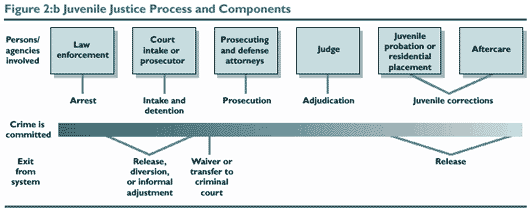

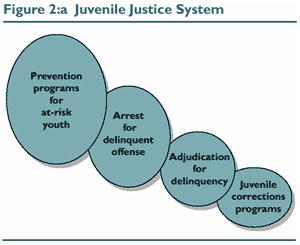



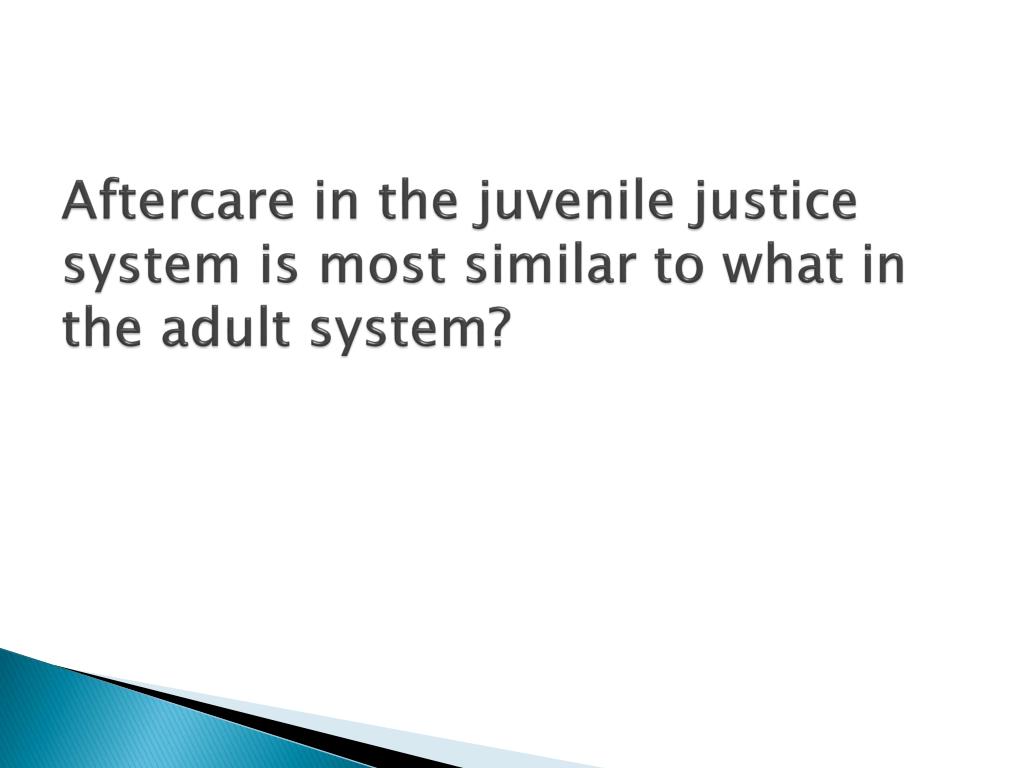

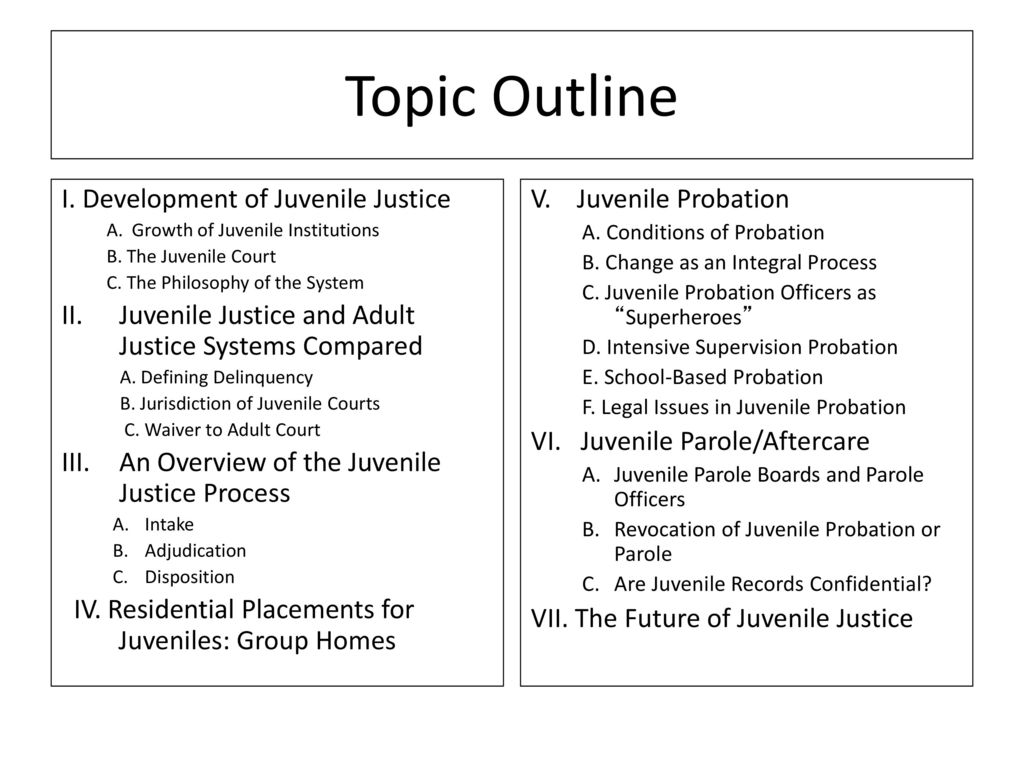

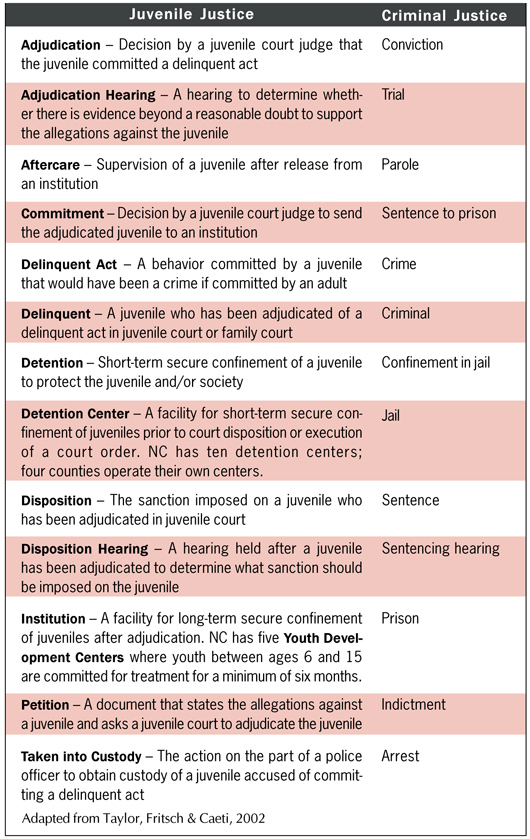











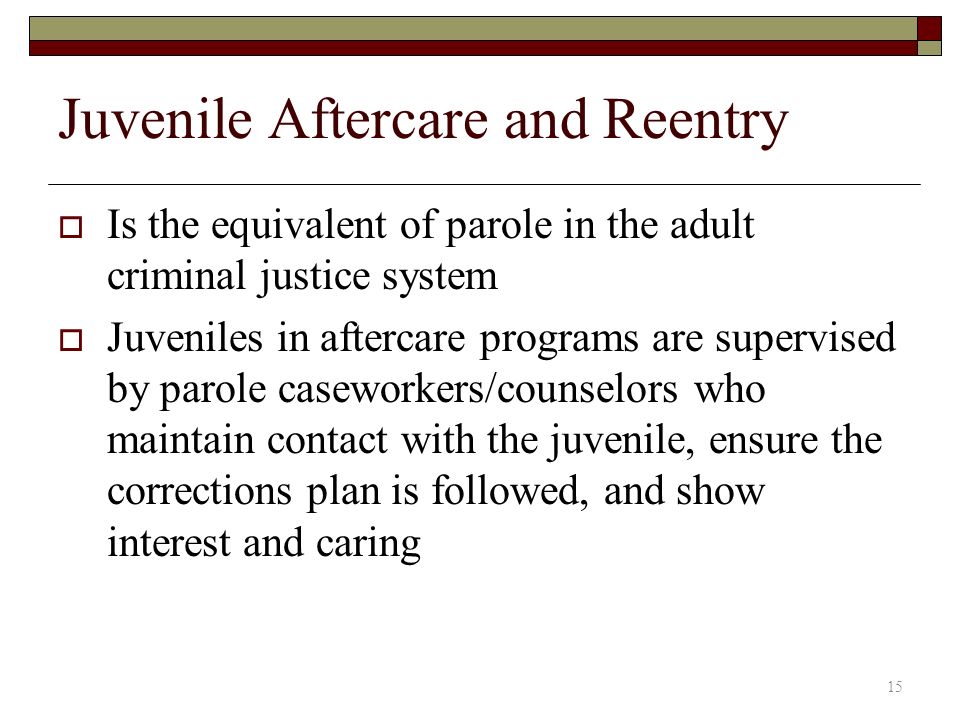
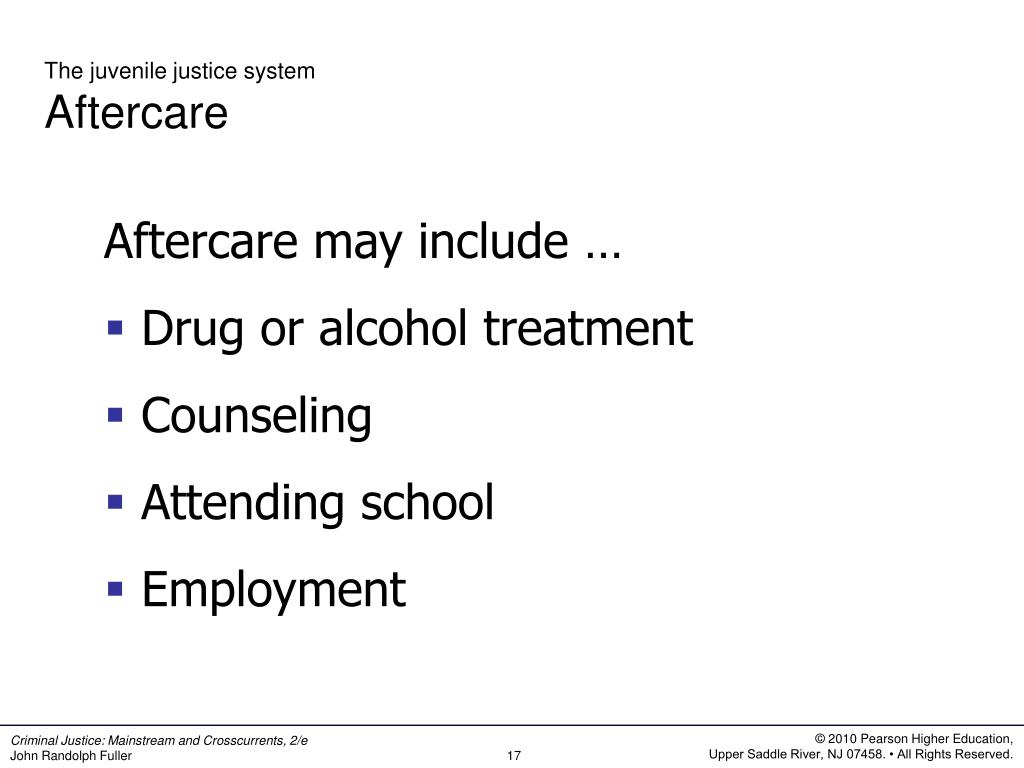



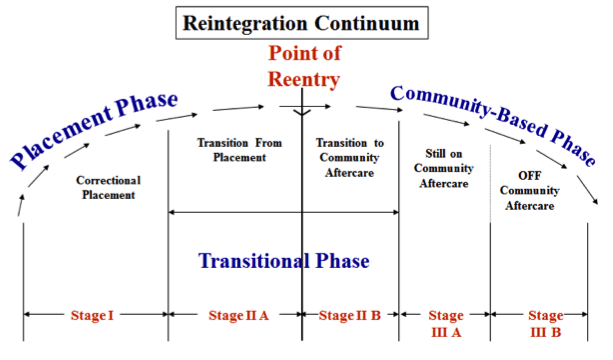



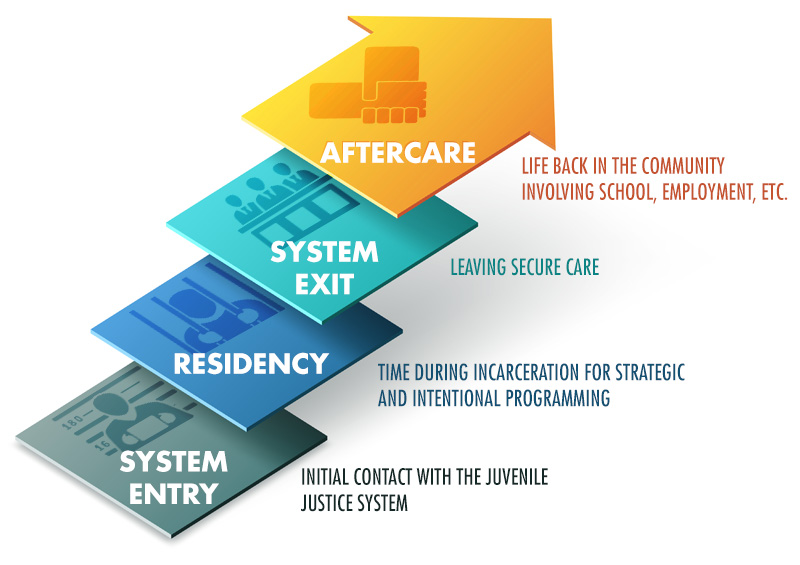
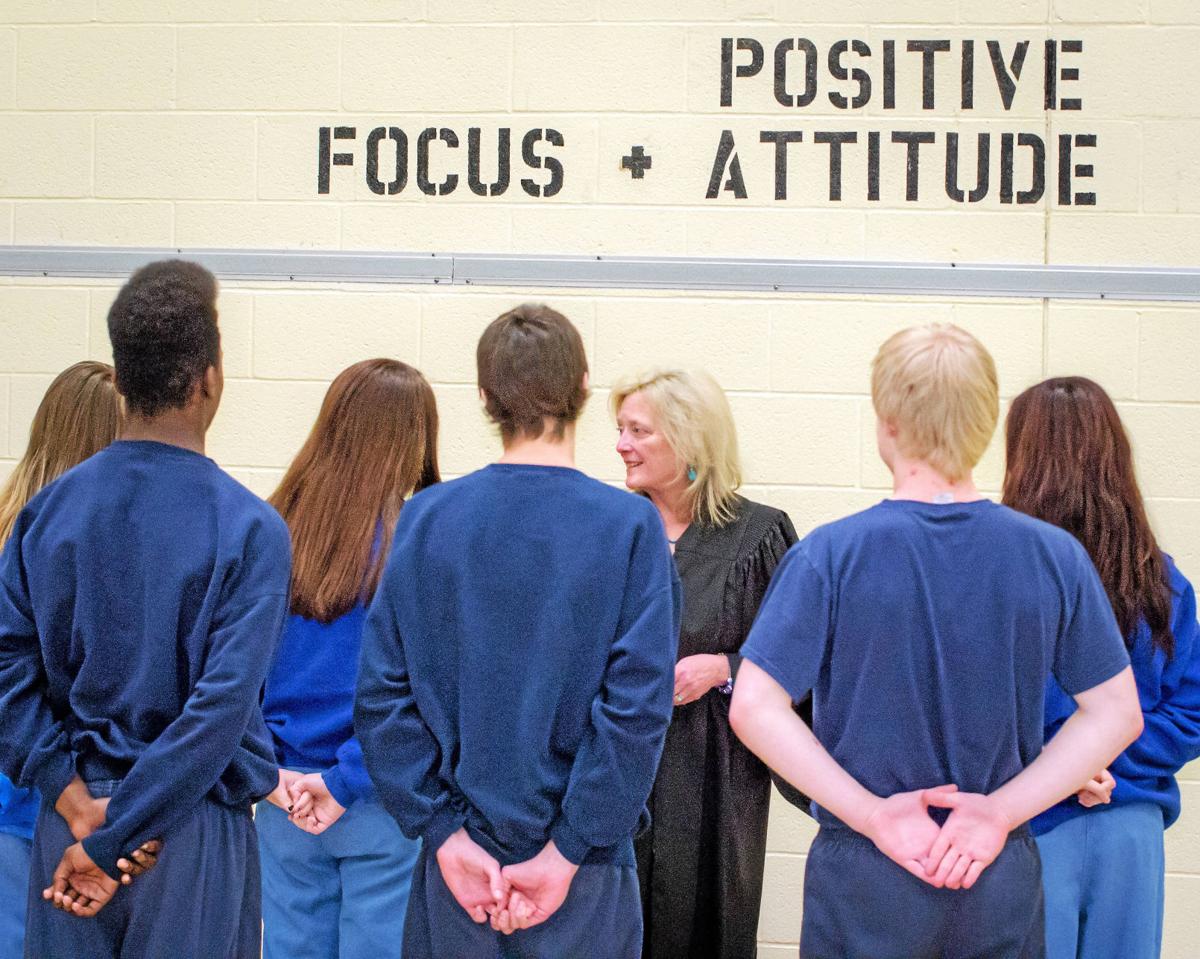

Post a Comment for "What Is Aftercare In The Juvenile Justice System"